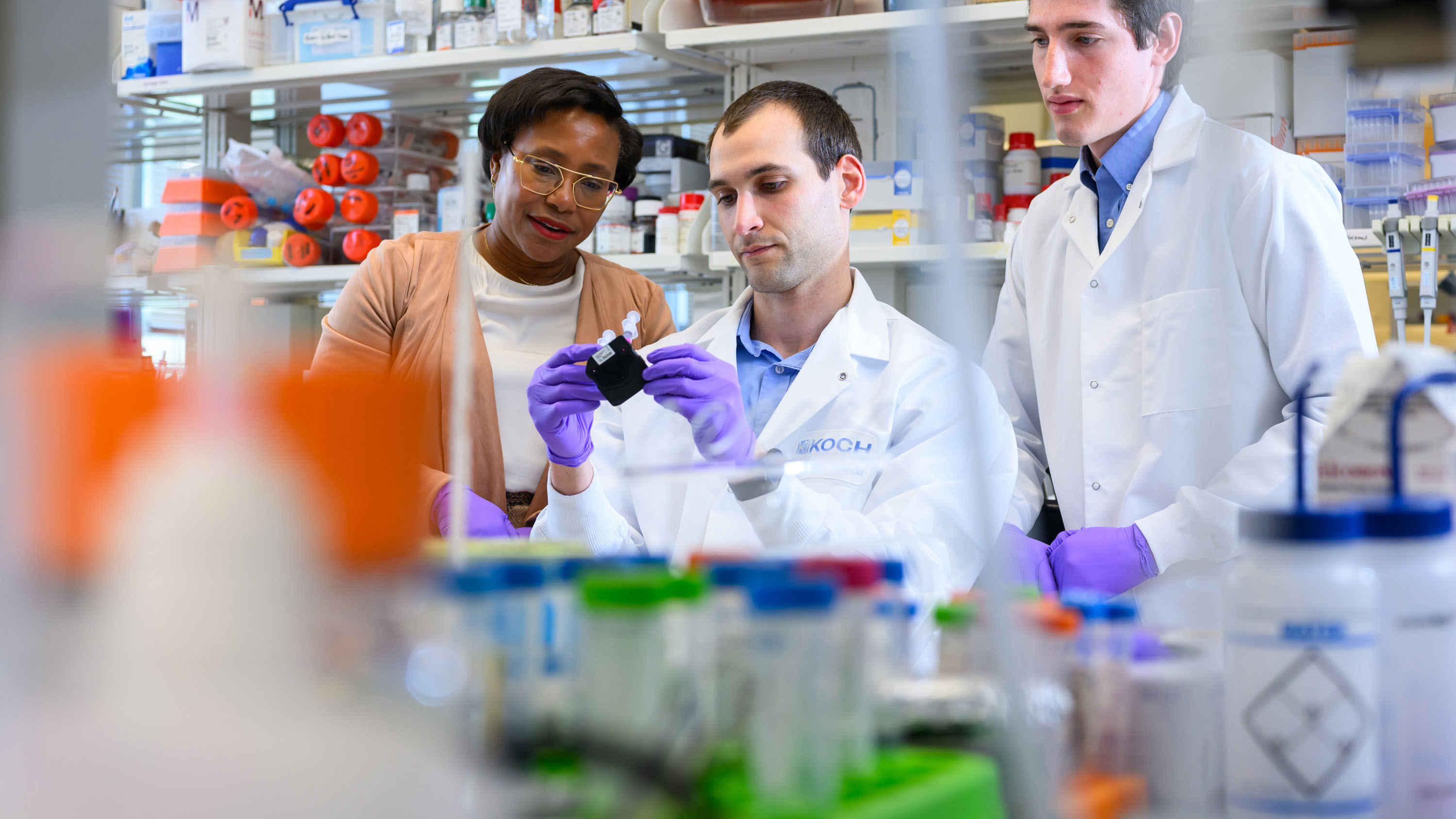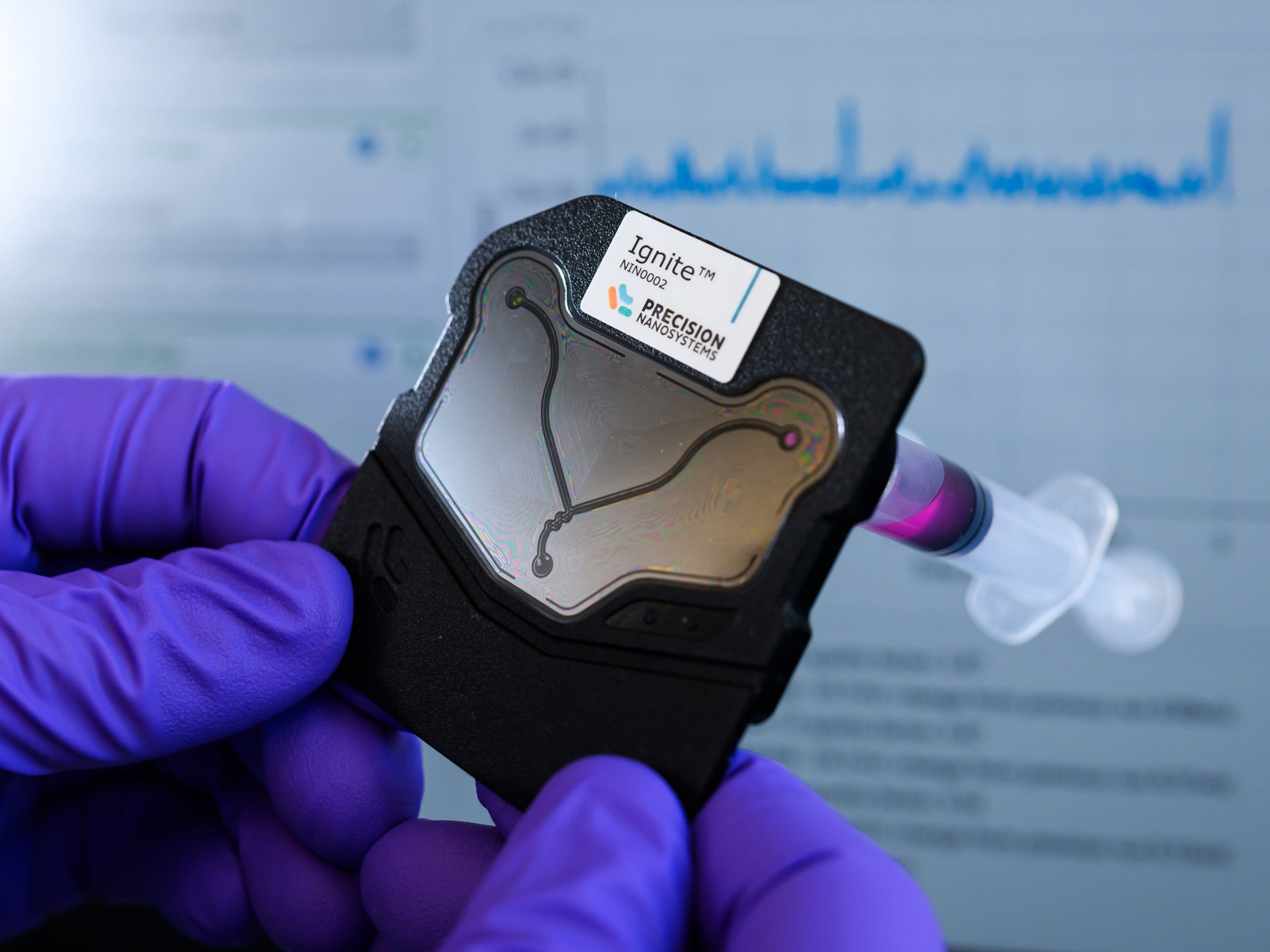Cancer-targeting nanoparticles are moving closer to human trials
A new technique lets researchers make many more of the particles much faster, using consistent practices that meet safety standards.

Over the past decade, Institute Professor Paula Hammond ’84, PhD ’93, and her students have used a technique known as layer-by-layer assembly to create a variety of polymer-coated nanoparticles that can be loaded with cancer-fighting drugs. The particles, which could prevent many side effects of chemotherapy by targeting tumors directly, have proved effective in mouse studies. Now the researchers have come up with a technique that allows them to manufacture many more particles in much less time, moving them closer to human use.
“There’s a lot of promise with the nanoparticle systems we’ve been developing, and we’ve been really excited more recently with the successes that we’ve been seeing in animal models for our treatments for ovarian cancer in particular,” says Hammond, the senior author of a paper on the new technique along with Darrell Irvine, a professor at the Scripps Research Institute.
In the original production technique, layers with different properties can be laid down by alternately exposing a particle to positively and negatively charged polymers, with extensive purification to remove excess polymer after each application. Each layer can carry therapeutics as well as molecules that help the particles find and enter cancer cells. But the process is time-consuming and would be difficult to scale up.
In the new work, the researchers used a microfluidic mixing device that allows them to sequentially add layers as the particles flow through a microchannel. For each layer, they can calculate exactly how much polymer is needed, which eliminates the slow and costly purification step and saves significantly on material costs.

This strategy also facilitates compliance with the FDA’s GMP (good manufacturing practice) requirements, which ensure that products meet safety standards and can be manufactured consistently. “There’s much less chance of any sort of operator mistake or mishaps,” says Ivan Pires, PhD ’24, a postdoc at Brigham and Women’s Hospital and a visiting scientist at the Koch Institute, who is the paper’s lead author along with Ezra Gordon ’24. “We can create an innovation within the layer-by-layer nanoparticles and quickly produce it in a manner that we could go into clinical trials with.”
In minutes, the researchers can generate 15 milligrams of nanoparticles (enough for about 50 doses for certain cargos), which would have taken close to an hour with the original process. They say this means it would be realistic to produce more than enough for clinical trials and patient use.
To demonstrate the technique, the researchers created layered nanoparticles loaded with the immune molecule interleukin-12; they have previously shown that such particles can slow growth of ovarian tumors in mice. Those manufactured using the new technique performed similarly to the originals and managed to bind to cancer tissue without entering the cancer cells. This lets them serve as markers that activate the immune system in the tumor, which can delay tumor growth and even lead to cures in mouse models of ovarian cancer.
The researchers have filed for a patent and are working with MIT’s Deshpande Center for Technological Innovation in hopes of forming a company to commercialize the technology, which they say could also be applied to glioblastoma and other types of cancer.
Keep Reading
Most Popular
We did the math on AI’s energy footprint. Here’s the story you haven’t heard.
The emissions from individual AI text, image, and video queries seem small—until you add up what the industry isn’t tracking and consider where it’s heading next.
We’re learning more about what weight-loss drugs do to the body
GLP-1 agonists like Wegovy, Ozempic, and Mounjaro might benefit heart and brain health—but research suggests they might also cause pregnancy complications and harm some users.
This giant microwave may change the future of war
The defense tech startup Epirus has developed a cutting-edge, cost-efficient drone zapper that’s sparking the interest of the US military. Now the company has to deliver.
How a new type of AI is helping police skirt facial recognition bans
Adoption of the tech has civil liberties advocates alarmed, especially as the government vows to expand surveillance of protesters and students.
Stay connected
Get the latest updates from
MIT Technology Review
Discover special offers, top stories, upcoming events, and more.